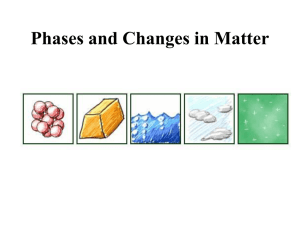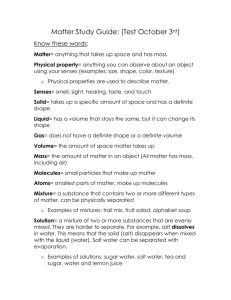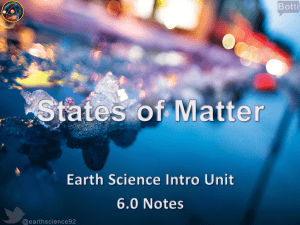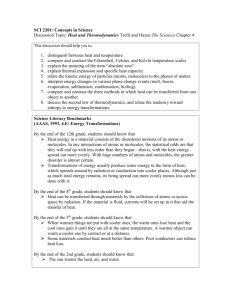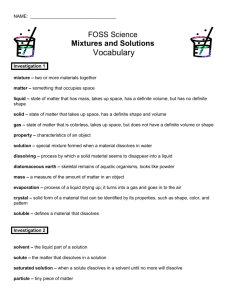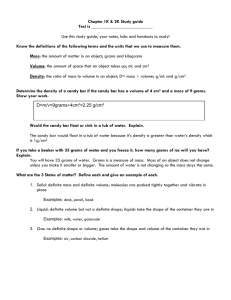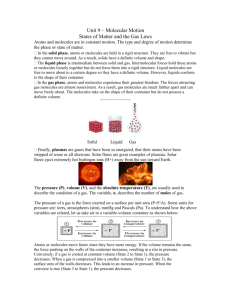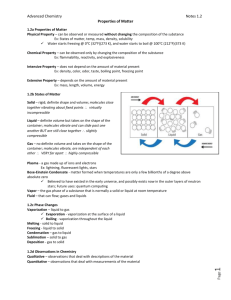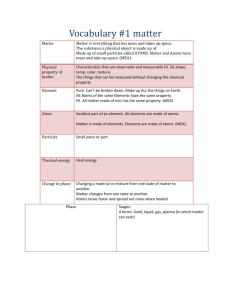Phases and Changes in Matter: Presentation
advertisement
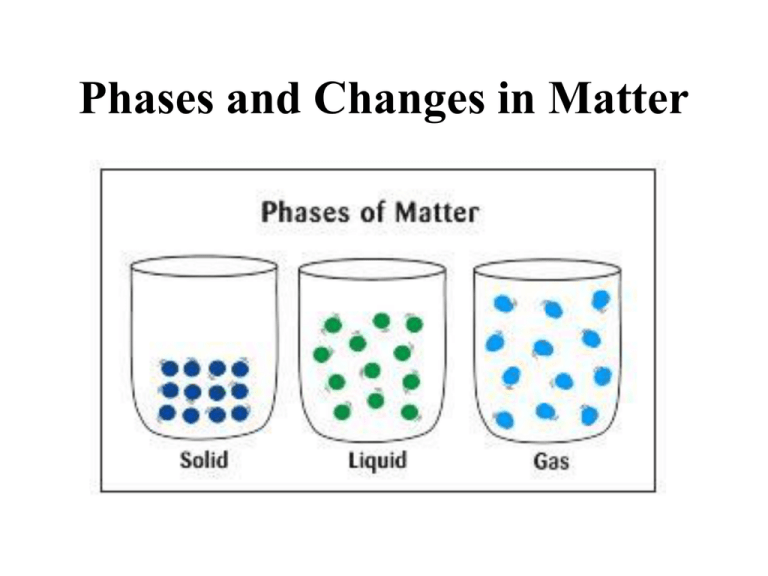
Phases and Changes in Matter • when they are close together, molecules are attracted through intermolecular forces • within all matter, there is a constant competition between temperature and intermolecular forces. – when temperature wins the competition, molecules fly apart and you have a gas. – when intermolecular forces win the competition, molecules clump tightly together and you have a solid Five phases of matter 1. Solids – – – have a definite shape and definite volume atoms can’t move out of place often arranged in crystals that are atoms arranged in regular, repeating patterns. 2. Liquids – do NOT have a definite shape • take on the shape of the container they are in – have a definite volume – atoms are very close together and are free to move • viscosity is the resistance of a liquid to move or flow 3. Gases – – does NOT have a definite shape or a definite volume atoms are often very far apart from each other but they can be pushed close together 4. Plasma – most common phase of matter in the universe • example: sun, a lightning strike, neon signs and fluorescent bulbs – atoms split into positively charged fragments called ions and negatively charged free electrons 5. Bose Einstein Condensate (be aware it exists; do not have to know anything about it) – – – all the atoms act absolutely identical to each other at incredibly low temperatures (less than millionths of a degree above absolute zero) atoms lose their individual identities and form into a single blob they act as super-atoms or groups of atoms that behave as one. http://www.colorado.edu/physics/2000/bec/what_is_it.html Phase Changes • substances can change states/phases by: – adding or taking away energy (heating or cooling down) – increasing or decreasing pressure • there are no chemical changes and therefore no new substances are formed • the following “triangle” shows how adding or subtracting heat can cause a phase change. LIQUID vaporization* *evaporation *boiling melting condensation freezing deposition GAS sublimation SOLID = taking away heat (cooling down) = adding heat (heating up) Boiling vs. Evaporation-- in more detail • Boiling – happens above the boiling point of the liquid at a given pressure – occurs throughout the liquid – can also happen if you remove some of the outside pressure which is holding the molecules of the liquid in place. • Evaporation – happens below the boiling point of the liquid – only occurs at the surface of the liquid
